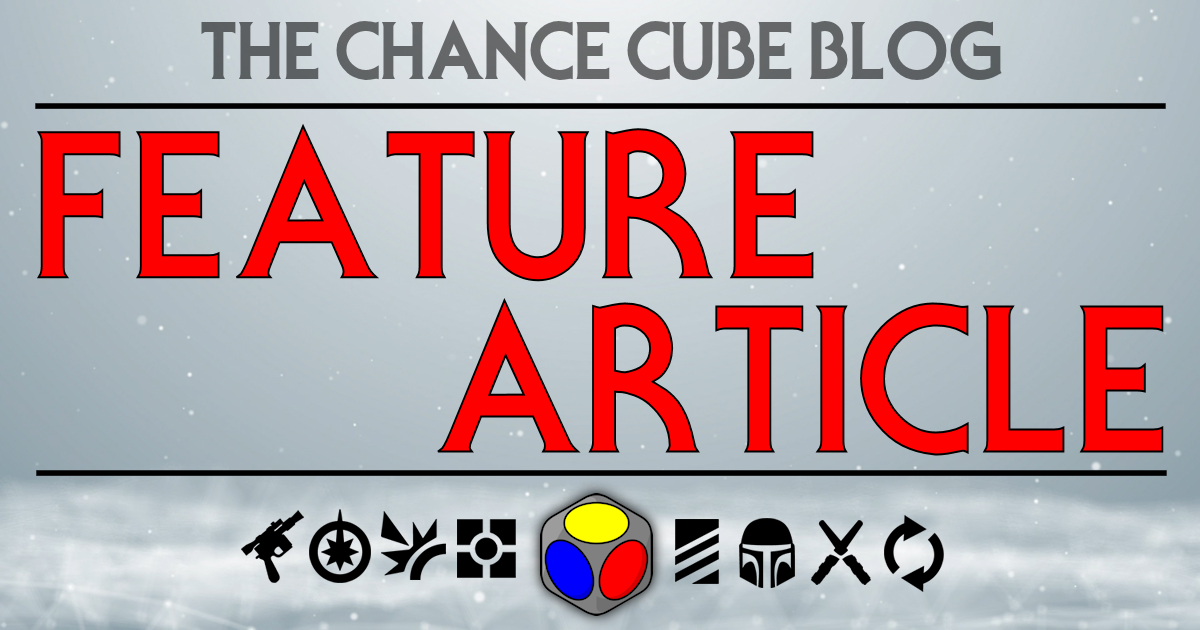In my first article in this series, I talked about the two different ways to win, by milling their deck or defeating their Characters. In this article in the series I am going to talk about some basic tips and strategies when choosing your Characters, and some possible synergies that you can utilize. I will also expand on article I and include reasons to take specific Characters for a specific strategy.
All cards in Star Wars: Destiny are color coded in one of 4 colors. There is blue for the force, red for command (military), yellow for rogues, and grey which is universal. In order to be able to play a specific card you need to have a Character of the same color in your deck. For example, if you want to play the AT-ST (AW5) you need to have a red Character in your deck. Also, if you want to play a card like Force Choke (AW13) you not only need to have a blue Character in your deck, but you need to play that card on a blue Character. So, what Characters you choose determines what cards can be included in your 30 card draw deck.
The first type of Character I want to discuss is the agro Character. The agro Character is defined as having 3 or more sides that deal or modify damage. In the Awakenings set the following are considered examples of an agro Character for the villains: First Order Stormtrooper (AW2), General Grievous (AW3), General Veers (AW4), Kylo Ren (AW11), Jango Fett (AW21), and Tusken Raider (AW22). Your first thought is wait, Kylo? Why him? I will tell you. While yes, only two sides of his die show damage, his special ability has the chance to deal damage.
However, Characters like Jabba the Hutt (AW20) and Padme Amidala (AW48) are the opposite of the agro Character. Their dice do not contain any native way to deal damage. Instead, they focus on supporting your remaining Characters or being able to mess with your opponent and their strategy. Wait, what? By not having any native way to deal damage and if that is your plan, you do need to add upgrade cards to your deck that have the ability to deal damage without needing another character. Why? Well, in the popular elite Jabba/elite Jango, the primary strategy is to defeat Jango first as he is the primary damage dealer. You need to have damage cards on Jabba, or in your deck, to continue to deal damage to defeat your opponenets.
And then there are the majority of the Characters. They have 2 damage sides along with other interesting abilities that make them worth considering. Darth Vader (AW10) has a 2 damage, 3 damage, 2 disrupt, 1 shield, 1 resource, 1 blank die. He is also quite expensive at 16/21. However, he has 13 health and one of the better abilities in the game, considering it work every time you activate him. With some lucky dice Vader can deal a good bit of damage, or disrupt your opponent’s ability to do things by making lose resources that they were planning on using that round.
Now, some Character combinations lend themselves to great pairings. Running Elite Han Solo (AW46) with Elite Rey (AW38) makes for a fast paced agro build even though neither Character has more than 2 damage sides to their dice. Putting lots of upgrades on Rey keeps giving you additional actions, and playing ambush cards keeps Han alive longer as he keeps getting shields. Putting a Holdout Blaster (AW63) on Rey is the most potent combo in this Character combination as it gives you 2 additional actions and a shield on Han.
The villains have a great combo with Elite Jabba the Hutt (AW20) and Jango Fett (AW21). Combined you can activate Jango for free in response to your opponent’s Character activation (giving you some semblance of agro), and Jabba can either reroll one of your yellow dice or even one of your opponents. And, this combo also give rise to one of the better upgrades, Flame Thrower (AW24) with its potential 4 damage.
In the end, each player needs to look at their strategy for winning and pick Characters (and their colors) that will best help them accomplish that task. There is something to be said for a mono-color deck as you can be guaranteed to play all cards at all times, or even a tri-color deck where you don’t have spot or color only card restrictions.
Support The Chance Cube
Do you enjoy the content provided by The Chance Cube? Would you like to connect even further with The Chance Cube Family? Consider supporting this content by joining our Patreon. We are a team dedicated to media coverage and community building, committed to bringing you the best of this game, sharing the joy and community that comes with it. Our Patreons enjoy membership in The Chance Cube Hangout, our Facebook group for supporters of the channel, and we have additional tiers that include gifts from us to you as a thanks for the generous support. Find out more at patreon.com/thechancecube.
